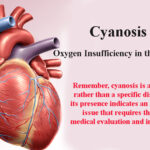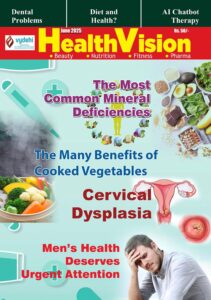Heart transplant surgeries are giving new lease of life to patients. Early diagnosis and medication may help to lead a more active life than without treatment.
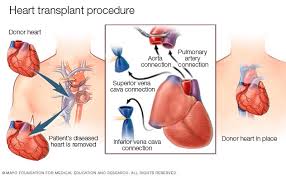

Some people with heart failure have enlarged hearts, which can be seen on a chest x-ray. As a weak heart struggles to pump out all its blood, the muscle fibres of the heart stretch. Over time, this extra stretching leaves the heart with larger, weaker chambers. This causes serious health problems and immediate medical attention is needed. Early diagnosis and medication may help to lead a more active life than without treatment. But with medication if the condition doesn’t change, it is referred to as end- stage heart failure. It is important to consult an experienced cardiologist for diagnosis and accurate treatment.
How to recognize heart failure?
Some are easy to confuse with normal aging or other diseases. The more advanced the heart failure is, symptoms are also more likely to get worse. The following are few common ways to get indications from the heart –
- Shortness of breath –if you find it hard to breathe after climbing a few stairs, or feel trouble even while sitting still.
- Sleep problems– due to breathlessness, trouble nodding off to sleep or getting up suddenly in the middle of the night gasping for air.
- Coughing –dry cough while sleeping and phlegm with pinkish tint while lying down.
- Fatigue – failure of heart make you feel won out.
- Swelling –as the hear t is no more able to move blood through the body it gets built up in certain parts leading to swelling.
- Loss of appetite –Feeling of hunger is lost and is pronounced with advanced stage.
- Frequent urinations –Visiting bathroom in the middle of the night more
- Heart palpitation– feeling of racing heart beat as if heart is beating too fast. To compensate for the amount of blood pumped, it tries to beat faster.
Common diseases that may lead to transplantation
1. Coronary Heart Disease:
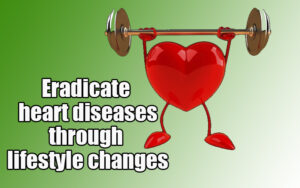

As the plaque increases in size, the insides of the coronary arteries get narrower and less blood can flow through them. Eventually, blood flow to the heart muscle is reduced, and, because blood carries much-needed oxygen, the heart muscle is not able to receive the amount of oxygen it needs. Heart transplantation is performed to replace a failing heart that cannot be adequately treated by other means.
2. Congestive Heart Failure (CHF) :
End-stage heart failure is a disease in which the heart muscle is failing severely in its attempt to pump blood through the body, and in which all other available treatments are no longer helping to improve the heart’s function. End-stage heart failure is the final stage of heart failure. Heart failure, also called congestive heart failure, or CHF, is a condition that occurs when the heart is unable to pump blood sufficiently. Despite its name, a diagnosis of heart failure does NOT mean the heart is about to stop beating. The term “failure” refers to the fact that the heart muscle is failing to pump blood in the normal manner because it has become weakened.
3. Cardiomayopathy:
Unlike heart disease due to heart attacks, where there is a problem with adequate blood flow to the heart, cardiomyopathy is a disease of the heart muscle itself. There are many causes of cardiomyopathy, which may include coronary artery disease and heart valve disease. Cardiomyopathy occurs in three major types – dilated, hypertrophic and restrictive – all of which affect your heart’s ability to pump blood and deliver it to the rest of your body.
Classification of heart failure
Classification helps in understanding the chronic and progressive nature of heart disease and helps direct treatment interventions.
At Stage A, patients are at high risk for developing heart failure because of pre-existing conditions, including coronary artery disease, hypertension, and diabetes mellitus.
At Stage B, patients have structural heart disease and left ventricular systolic dysfunction but are asymptomatic at rest.
At Stage C, patients have systolic dysfunction and are experiencing symptoms or they have a history of prior symptoms of heart failure. Finally,
At Stage D, patients have refractory symptoms, including dyspnoea and fatigue at rest, despite optimal medical therapy. At this stage patients are considered to be at the end stage of heart failure.
What happens during a heart transplant procedure?
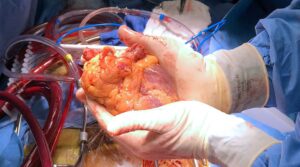

The second operation is to remove the recipient’s damaged heart. Removing the damaged heart may be very easy or very difficult, depending on whether the recipient has had previous heart surgery (as is often the case). If there has been previous surgery, cutting through the scar tissue may prolong and complicate removal of the heart.
The third operation is probably the easiest with the technological advancement, this operation basically involves the creation of only five lines of stitches, or “anastomoses”. These suture lines connect the large blood vessels entering and leaving the heart. Remarkably, if there are no complications, most patients who have had a heart transplant are home about one week after the surgery. The generosity of donors and their families makes organ transplant possible.


Dr. Kewal Krishan, Director
Heart Transplant & Ventricular Assist Devices
Principal Consultant – Cardiac Surgeon
Max Super Speciality Hospital
Saket, New Delhi



